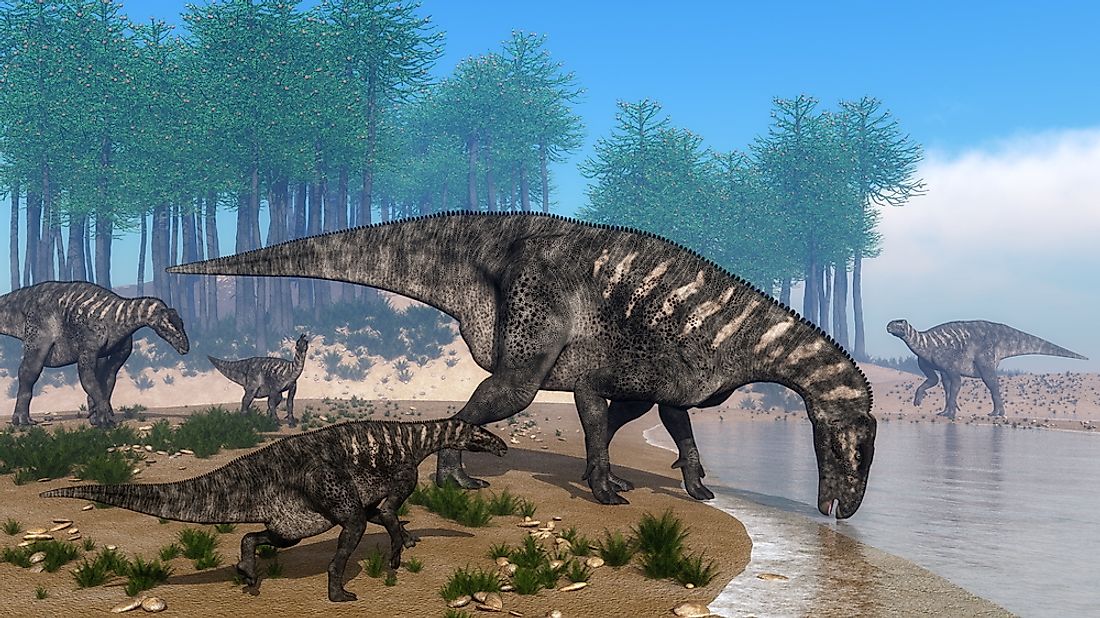Iguanodon Facts: Extinct Animals of the World

Iguanodon is a dinosaur that lived approximately 135 million years ago in the Cretaceous Period. When Mary Mantell discovered its teeth and a few bones in 1822, she immediately saw their semblance with those of the modern guana. Later on in 1825, Gideon Mantell named the dinosaur “Iguanodon” meaning “guana teeth.” The fossils were discovered in Sussex, in the United Kingdom. Fossils of the Iguanodon have also been discovered in Belgium, Germany, North Africa, the United States, and some parts of England. The Iguanodon was 16 feet tall, 5 tons in weight, and 45 feet long. It is believed to have been a herbivorous animal. At first, the naturalists mistook the Iguanodon to be a fish, a carnivorous reptile, and a rhinoceros.
Iguanodon could walk on two or four legs
The Iguanodon was able to walk on two legs or four legs depending on what it wished to do. The fastest speed it ever recorded was 12 miles per hour which is half the speed of a person running. Although the animal had very strong legs, they were not built for running.
Iguanodon Species
Being one of the earliest discoveries among dinosaurs, subsequent discoveries were aiming at identifying similarities. This made naturalists put more than two dozen species under this group. However, as studies went on most species were grouped differently. Currently, only two Iguanodon species exist: Iguanodon bernissartensis and Iguanodon ottingeri. They are also referred to as Mantellisaurus and Gideonmantellia in honor of Gideon Mantell who discovered their first remains.
Iguanodon was among the first dinosaurs to be displayed in public
Iguanodon, alongside hylaeosaurus and megalosaurus, were the first to be displayed in public. The display was made to the British public at an exhibition hall in Crystal Palace in 1854. The mosasaurus and ichthyosaurus were also displayed. However, the models displayed were not based on actual skeletal structures, but rather cartoonish models.
Ornithopod Genus
Ornithopods are petite herbivores who lived in the Cretaceous and Jurassic period. Since then, more Ornithopods have been discovered and named after great palaeontologists. Researchers have done more studies on them given the large number of complete remains that have been obtained. The Iguanodon is a genus of the Ornithopod dinosaurs which lived millions of years ago.
Iguanodon lineage
In as much as the Iguanodons strongly resembled the carnivorous dinosaurs, they came from the same lineage as the duck-billed dinosaur. Also known as the Hadrosaurs, the duck-billed dinosaurs were huge in size than the Iguanodons. They also had prominent beaks from which their name was derived.
The Iguanodon had a thumb spike
One unique and notable feature of the Iguanodon that helped distinguish it from other dinosaurs was the presence of a thumb spike. Many explanations have been put forward by naturalists to explain why it possessed this feature. Most argue that Iguanodons used the thumb spike to defend themselves from predators. In addition, the thumb has also been associated with sexual selection. The spikes also helped them in foraging for food.











